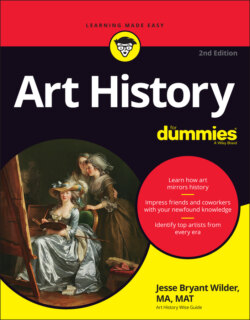Читать книгу Art History For Dummies - Jesse Bryant Wilder - Страница 138
Sculpting passion and struggle
ОглавлениеThe greatest achievements of Hellenistic culture were in sculpture. Hellenistic sculptors replaced the serene beauty of classical sculpture with powerful emotionalism and sometimes brutal realism. The Nike of Samothrace (on the left in Figure 7-13), is a Hellenistic victory statue often attributed to Pythokritos, the great sculptor of the Greek island of Rhodes (second century BC). Nike looks like she’s just landed with her Air Jordans on the prow of a ship, the wind still gusting in her wings and gown. You can feel victory in the folds of her garment and uplifted wings. Also, the sculptor has learned to create art that charges the atmosphere around it. Instead of being self-contained, the statue radiates energy beyond itself into the surrounding space.
Gloria Wilder(left) Takashi Images / Adobe Stock (right)
FIGURE 7-13: Nike of Samothrace and Laocoön and His Sons radiate the energy and realism of Hellenistic sculptures.
Hellenistic sculptors also probed the depths of human suffering for the first time in the history of art. The agony of death was never before so vividly portrayed as it is in these two works:
The Dying Trumpeter, carved in the third century BC in Pergamon (in modern-day Turkey), is a moving depiction of an enemy Celt warrior wounded in a battle with the Greeks who colonized Asia Minor. The statue is carved in a way that enables the viewer to feel the death pains that the man faces with quiet dignity.
Laocoön and His Sons (on the right in Figure 7-13) is a Hellenistic sculpture from Rhodes, which may have been carved by three sculptors — Agesander, Athenodoros, and Polydoros — all highly skilled copyists. Laocoön and His Sons captures the mythical life-and-death struggle between a father, his boys, and two vicious sea serpents. Laocoön was punished by the goddess Athena for trying to expose the Trojan Horse as a fraud to the Trojans, who viewed it as a gift and sign that the Greeks had quit their siege of Troy. This first-century BC statue was discovered in 1506 in the ruins of the Emperor Nero’s famed “Golden House” in Rome. Actually the Trojan Horse concealed a squad of Greek kings waiting to pounce on the Trojans when they dragged the giant wooden horse into their unsuspecting city.
